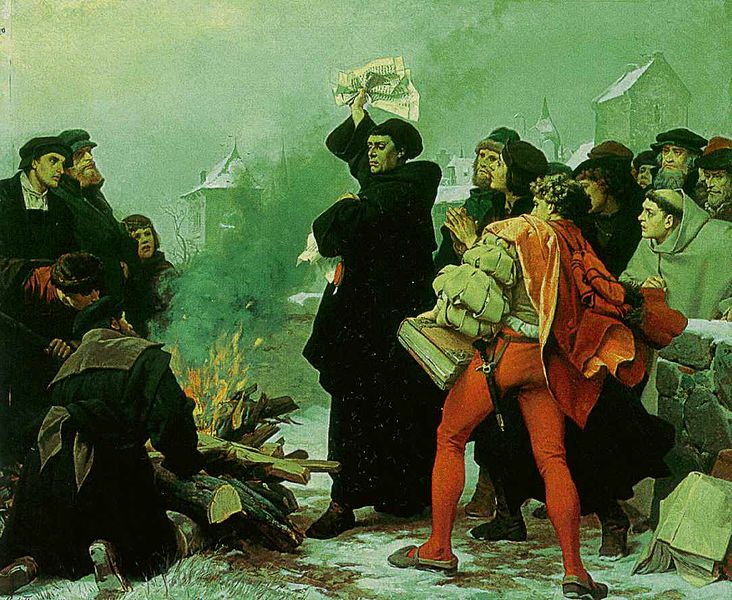E: The destruction of the order par excellence
Indeed, the order of things being destroyed is medieval Christendom. Now, medieval Christendom was not just any order, or merely one of many possible orders. It was the realization, in the circumstances inherent to the times and places, of the only authentic order among men, namely, Christian civilization.

Then the religion instituted by Jesus Christ, solidly established in the degree of dignity due to it, flourished everywhere thanks to the favor of princes and the legitimate protection of magistrates. Then the Priesthood and the Empire were united in a happy concord and by the friendly interchange of good offices.
In his encyclical Immortale Dei, Leo XIII described medieval Christendom in these terms: “There was a time when the philosophy of the Gospel governed the states. In that epoch, the influence of Christian wisdom and its divine virtue permeated the laws, institutions, and customs of the peoples, all categories and all relations of civil society. Then the religion instituted by Jesus Christ, solidly established in the degree of dignity due to it, flourished everywhere thanks to the favor of princes and the legitimate protection of magistrates. Then the Priesthood and the Empire were united in a happy concord and by the friendly interchange of good offices. So organized, civil society gave fruits superior to all expectations, whose memory subsists and will subsist, registered as it is in innumerable documents that no artifice of the adversaries can destroy or obscure.”1

Indubitably, the present Revolution had precursors and prefigures. For example, Arius
Having begun in the fifteenth century, the destruction of the disposition of men and things according to the doctrine of the Church, the teacher of Revelation and Natural Law, is almost complete today. This disposition of men and things is order par excellence. What is being implanted is the exact opposite of this. Therefore, it is the Revolution par excellence.

… and Mohammed…
Indubitably, the present Revolution had precursors and prefigures. For example, Arius and Mohammed were prefigures of Luther. Also, in different epochs, utopians dreamed of days very much like those of the Revolution. Finally, on several occasions, peoples or groups tried to establish a state of things analogous to the chimeras of the Revolution.

….were prefigures of Luther.
But all these dreams and prefigures are little or nothing in comparison to the Revolution in whose process we live. By its radicality, by its universality, by its potency, the Revolution has penetrated so deep and is reaching so far that it stands unmatched in history. Many thoughtful souls are wondering if we have not in fact reached the times of the Anti-Christ. Indeed, to judge from the words of Pope John XXIII, it would seem they are not distant. “We tell you furthermore that in this terrible hour, when the spirit of evil seeks every means to destroy the kingdom of God, we must exert ourselves to the utmost to defend it, if you do not wish to see your city lying in immensely greater ruins than those left by the earthquake of fifty years ago. How much more difficult it would be then to raise up the souls, once they had been separated from the Church or enslaved to the false ideologies of our times!” (Radio message of Dec. 28, 1958, to the population of Messina, on the fiftieth anniversary of the earthquake which destroyed that city, L’Osservatore Romano[weekly French edition], Jan. 23, 1959.)

Many thoughtful souls are wondering if we have not in fact reached the times of the Anti-Christ. The Antichrist by Matthias Gerung
1. John XXIII, radio message of December 28, 1958, to the population of Messina, on the fiftieth anniversary of the earthquake which destroyed that city, L’Osservatore Romano (weekly French edition), January 23, 1959.
Plinio Corrêa de Oliveira, Revolution and Counter-Revolution (York, Penn.: The American Society for the Defense of Tradition, Family, and Property, 1993), Part I, Ch. VII, 1-E, pp. 41-43.









